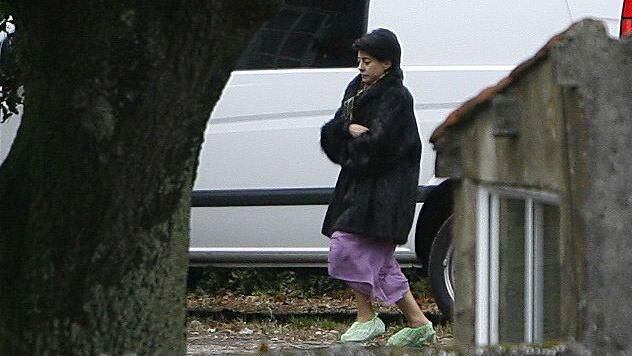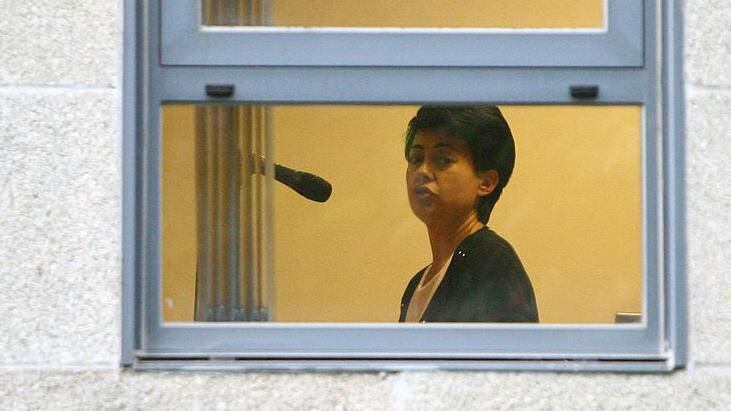:quality(75)/cloudfront-us-east-1.images.arcpublishing.com/elcomercio/CHXRSH57EVHV7HLNEWYWVOK4H4.png)
Warning: this article contains spoilers for the series “The Asunta Case”.
It was a case full of unknowns – some still unsolved – that kept an entire country in suspense.
The disappearance of a 12-year-old girl and the subsequent discovery of her body abandoned in the field gave rise to a frantic police operation that quickly aroused the interest of the media.
LOOK: “I couldn’t protect my girl. I just wanted to give her a decent life”: the father who saw his daughter suffocate while trying to reach the UK
The girl, originally from China, was adopted when she was 1 year old by Alfonso Basterra and Rosario Porto, a wealthy couple from Santiago de Compostela, in the autonomous community of Galicia, in northwestern Spain.
The adoptive parents they named the girl Asunta and was raised in a privileged and apparently happy environment, until the police and judicial investigation showed a totally different picture.
The events occurred in 2013 and today make up the plot of the Netflix series “O Caso Asunta”, based on real events but with creative elements to preserve identities and adapt to a fictional narrative rhythm.
Disappearance and death
Born in the city of Yongzhou, southeast China, on September 30, 2000, baby Fang Yong was given up for adoption after completing the first year of life of the Spanish couple formed by Alfonso Basterra and Rosario Porto (played in the series by Tristán Ulloa and Candela Peña).
He was a journalist and she chose her father’s profession, a rich lawyer who was honorary consul of France and well known in his city.
Doctors recommended that they not have children, as she suffered from lupus erythematosus, a disease that could put her life at risk if she became pregnant.
The girl, now with the identity of Asunta Basterra, soon began to show signs of her intelligence. She attended private schools and learned quickly, especially languages.
She enjoyed vacations with her family, had many friends, and her adoptive grandparents adored her.
But when Asunta was just over a week away from turning 13, Alfonso and Rosário went to the police to report her missing.
It was on the night of Saturday, September 21, 2013.
Hours later, in the early hours of the morning, the girl found dead near a road secondary school in a wooded area, several kilometers south of the city.
She was tied up with orange ropes, there were no signs of sexual abuse and He appeared to have died from asphyxiationsomething the autopsy would later confirm.
The girl’s parents collaborated in the investigation, which turned against them when agents found evidence and detected inconsistencies in their statements.
The main of these clues was the discovery, in a rural house owned by the family and close to the scene of the events in the city of Teo, of some orange strings similar to those used to bind Asunta’s body.
Furthermore, the autopsy revealed that the minor had high doses of lorazepama powerful tranquilizer and anxiolytic that is only sold in Spain with a prescription.
And both Rosário and Alfonso offered different versions of their movements on the Saturday afternoon the disappearance occurred.
With all this, Rosário was arrested and investigated for murder on September 24th and Alfonso on the 25th.

Suspicious background
The process of clarifying the facts was long and the popular jury’s verdict came more than two years after Asunta’s death.
However, the investigations revealed important details about the marriage and the relationship with the girl that influenced the investigation of the case and the subsequent trial.
The year 2013 was especially turbulent for lawyers and journalists.
In January of that year he discovered her infidelity what led to the divorce almost imminent, although both reached an agreement in the following months to share custody of their adopted daughter.
As part of the pact, Alfonso moved into an apartment close to Rosário and Asunta’s house.
In July a strange event occurred in which a masked man allegedly entered Asunta’s room at night and tried to strangle her.
The alleged attacker fled after being surprised by Rosário, who, however, did not file a complaint with the police.
That same month, the girl showed signs of drowsiness during music classes and confessed to the teacher that her mother gave her a powder that made her sleep.
The police investigation revealed that Alfonso purchased several boxes of the painkiller lorazepam both in July (when the episodes of lethargy occurred in classes) and in September (days before the girl’s death).

Asunta’s adoptive father always maintained that the medicines were for his wife, who went through very delicate moments and was hospitalized.
In the series, this complicated phase is related to a supposed sentimental rupture between Rosário and her lover, Vicente.
The trial and reconstruction of events
The oral phase of the trial began in June 2014, when the Public Prosecutor’s Office requested 18 years for each of the parents and the popular Public Prosecutor’s Office, 20.
However, it was only on September 29, 2015 that, after the selection of the jury and with 84 witnesses and 60 experts, the process really began, amid enormous media attention in the Provincial Court of La Coruña.
At the trial, all types of evidence were collected to try to reconstruct the facts.
Forensic experts were unable to determine the exact time of the minor’s death, so they estimated it, without absolute certaintybetween 7pm and 8pm on September 21st.
This meant that the investigation had to be based on the testimonies of those who saw those involved that day and on videos from surveillance cameras located in the places they passed.
According to the researchers’ reconstruction, this is how the fateful September 21, 2013 unfolded:
Rosario Porto and Alfonso Basterra defended their innocence at all times.
On October 30, 2015, the jury found them guilty, determining that Rosário suffocated the girl with the connivance of her ex-husband.
The sentence was announced just two weeks later, on November 12: 18 years in prison each for murder with aggravating circumstances of kinship and abuse of authority.
Why did they kill her?

The phrase did not refer possible motive for the crimewhich to this day is the biggest mystery of the case.
There are several theories, none conclusive, about what could have led her adoptive parents to murder Asunta.
One of them suggests that Asunta could have been seen as an obstacle in her parents’ relationship, who were going through emotional turmoil after their divorce.
Rosário’s mental health was also cited as a possible trigger, given his emotional instability and multiple episodes of severe depression, anxiety, and a desire to dieevidenced during the trial.
A possible economic reason related to the inheritance of Asunta’s maternal grandparents was also explored, but was discarded since Rosário was the only heir.
Another line of investigation addressed a possible sexual motive following the discovery of semen on Asunta’s clothing, although this evidence was discarded as it came from laboratory contamination.
Nor were any incriminating conclusions drawn from the pornographic material found on Asunta’s father’s laptop.
Thus, the case was left with multiple unanswered questions.
What happened to Rosario and Alfonso

After two failed attempts, Rosário Porto committed suicide in prison on November 18, 2020, and Alfonso Basterra serves time until 2031.
In 2017, Basterra wrote a letter from prison to Ramón Campos, creator of the new Netflix production and also of the previous documentary “O Caso Asunta: Operación Nenúfar” that year.
In it he once again defended his innocence, regretted not being able to protect his daughter from the real “murderer” and expressed his intention to “disappear” when he was released from prison.
“I only have one reason to stay alive, and that is none other than to be a free man again and to be reunited with my girl, never before,” wrote Alfonso Basterra.
“My real sentence is not prison, Mr. Campos, but not being able to help her when she needed it most.
“So when you hear of my death, I beg you to open a bottle of cava and toast your loved ones. Only then will you understand that I have regained my happiness. My daughter needs me and I need her.”
Source: Elcomercio
I am Jack Morton and I work in 24 News Recorder. I mostly cover world news and I have also authored 24 news recorder. I find this work highly interesting and it allows me to keep up with current events happening around the world.





